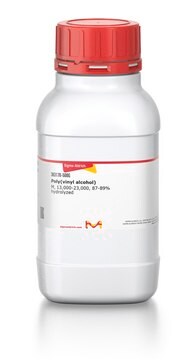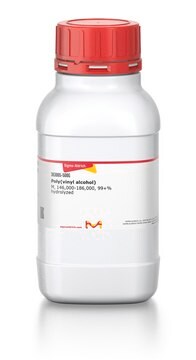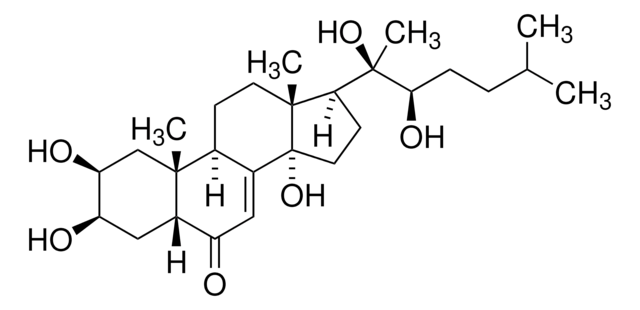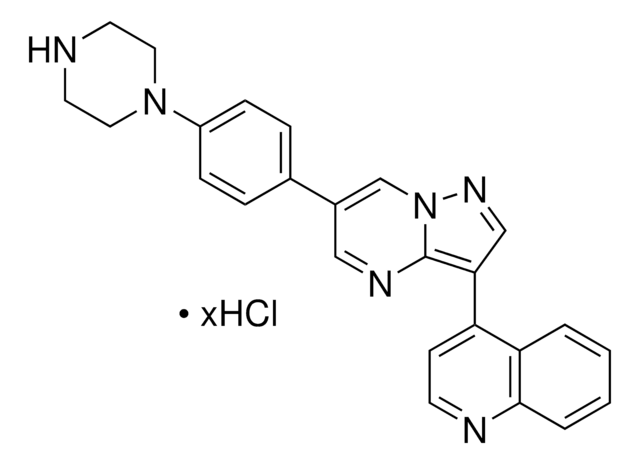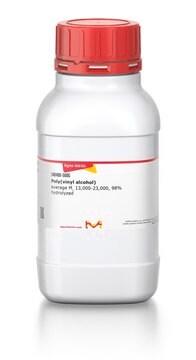Wszystkie zdjęcia(2)
Key Documents
P8136
Poly(vinyl alcohol)
87-90% hydrolyzed, average mol wt 30,000-70,000
Synonim(y):
PVA, PVAl, PVOH, Poly(Ethenol)
Zaloguj sięWyświetlanie cen organizacyjnych i kontraktowych
About This Item
Polecane produkty
Poziom jakości
Postać
powder
masa cząsteczkowa
average mol wt 30,000-70,000
lepkość
4-6 cP, 4 % in H2O(20 °C)(lit.)
rozpuszczalność
H2O: soluble
InChI
1S/C2H4O/c1-2-3/h2-3H,1H2
Klucz InChI
IMROMDMJAWUWLK-UHFFFAOYSA-N
Szukasz podobnych produktów? Odwiedź Przewodnik dotyczący porównywania produktów
Powiązane kategorie
Zastosowanie
Poly(vinyl alcohol) has been used:
- in in vitro production (IVP) of bovine embryos
- oocyte recovery and in vitro maturation
- as a macromolecular component in basal cultured medium
Działania biochem./fizjol.
Poly(vinyl alcohol) (PVA) is a polyhydroxy polymer, soluble in water. PVA is known to possess high mechanical strength, biocompatibility and non-toxicity. Hence, it serves as a biomedical implant material. Polymerization of vinyl acetate to poly (vinyl acetate), which is then hydrolysed to form PVA. Its application is observed in drug delivery systems, wound dressing, dialysis membranes, artificial skin, surgical repairs and cardiovascular devices.
This page may contain text that has been machine translated.
Kod klasy składowania
11 - Combustible Solids
Klasa zagrożenia wodnego (WGK)
WGK 1
Środki ochrony indywidualnej
Eyeshields, Gloves, type N95 (US)
Wybierz jedną z najnowszych wersji:
Masz już ten produkt?
Dokumenty związane z niedawno zakupionymi produktami zostały zamieszczone w Bibliotece dokumentów.
Klienci oglądali również te produkty
In Vitro Developmental Competence of In Vitro-Matured Bovine Oocytes Fertilized and Cultured in Completely Defined Media
Keskintepe L and Brackett BG
Biology of Reproduction, 55, 333-339 (1996)
Nanostructured poly(vinyl alcohol)/bioactive glass and poly(vinyl alcohol)/chitosan/bioactive glass hybrid scaffolds for biomedical applications
Mansur HS and Costa HS
Chemical Engineering Journal, 137, 72-83 (2008)
Structure and applications of poly (vinyl alcohol) hydrogels produced by conventional crosslinking or by freezing/thawing methods
Biopolymers PVA Hydrogels Anionic Polymerisation Nanocomposites, 37-65 (2000)
Birth of Piglets Derived from Porcine Zygotes Cultured in a Chemically Defined Medium
Yoshioka K, et al.
Biology of Reproduction, 66(1), 112?119-112?119 (2002)
C Wrenzycki et al.
Human reproduction (Oxford, England), 16(5), 893-901 (2001-05-02)
Assisted reproduction technologies have made great progress during the last 15 years in most mammalian species, including humans. Growing evidence indicates that bovine pre-implantation development is a superior model for investigating early human development than the mouse. The purpose of
Nasz zespół naukowców ma doświadczenie we wszystkich obszarach badań, w tym w naukach przyrodniczych, materiałoznawstwie, syntezie chemicznej, chromatografii, analityce i wielu innych dziedzinach.
Skontaktuj się z zespołem ds. pomocy technicznej
